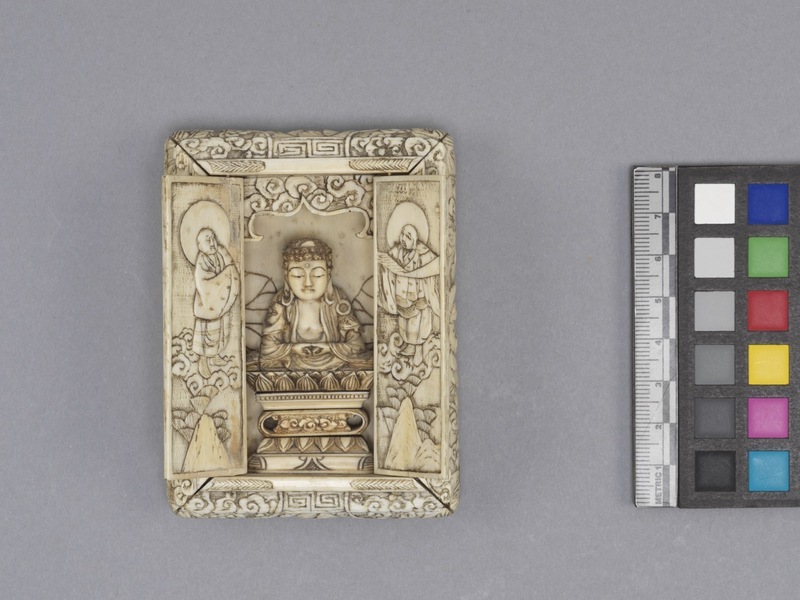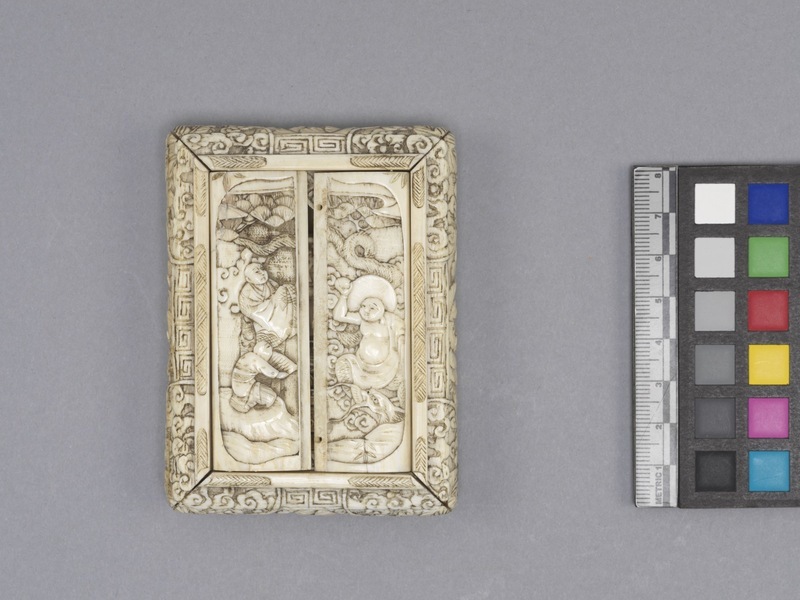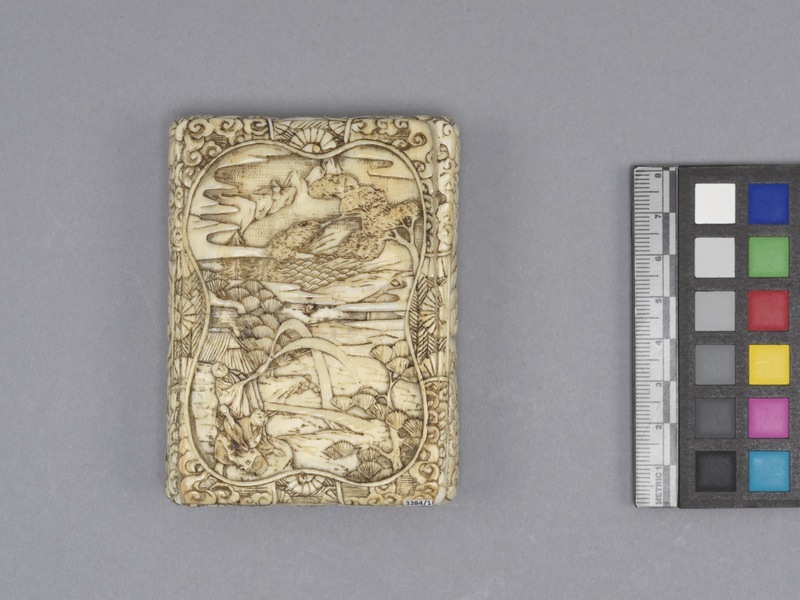Buddhist Shrine Item Number: 3384/1 from the MOA: University of British Columbia



Description
Small carved ivory shrine (zushi). Inside the small hinged doors sits a carved amitabha Buddha. The outer edges of the shrine are completely covered in carved designs; the exterior and the interior surfaces of the rectangular hinged doors are covered in carved Buddhist scenes. The background wall behind the seated three-dimensional Buddha, inside the shrine, also has a simpler carved design.
History Of Use
Zushi (厨子) usually enshrine Buddhist statues, but may contain painted images, relics or scriptures. They vary in size and shape but typically have a pair of doors in front, hinged at the sides, which can be opened or closed. Large zushi are found at Buddhist temples in Japan.
Narrative
Said to have been collected by Norman Mackenzie in either Tokyo or Yokohama, in October 1931, while en route to the Institute of Pacific Relations conference in Shaghai. The shrine is thought to date from either the Meiji period (1868-1912), or possibly the Taisho period (1912-1926).
Item History
- Made in Japan between 1868 and 1926
- Collected during 1931
- Owned by Bridget MacKenzie before September 5, 2019
- Owned by Norman A. M. Mackenzie between 1931 and 1986
- Received from Bridget MacKenzie (Donor) on September 5, 2019
What
Who
- Culture
- Japanese
- Previous Owner
- Bridget MacKenzie and Norman A. M. Mackenzie
- Received from
- Bridget MacKenzie (Donor)
Where
- Holding Institution
- MOA: University of British Columbia
- Made in
- Japan
When
- Creation Date
- between 1868 and 1926
- Collection Date
- during 1931
- Ownership Date
- before September 5, 2019 and between 1931 and 1986
- Acquisition Date
- on September 5, 2019
Other
- Condition
- fair
- Accession Number
- 3384/0001